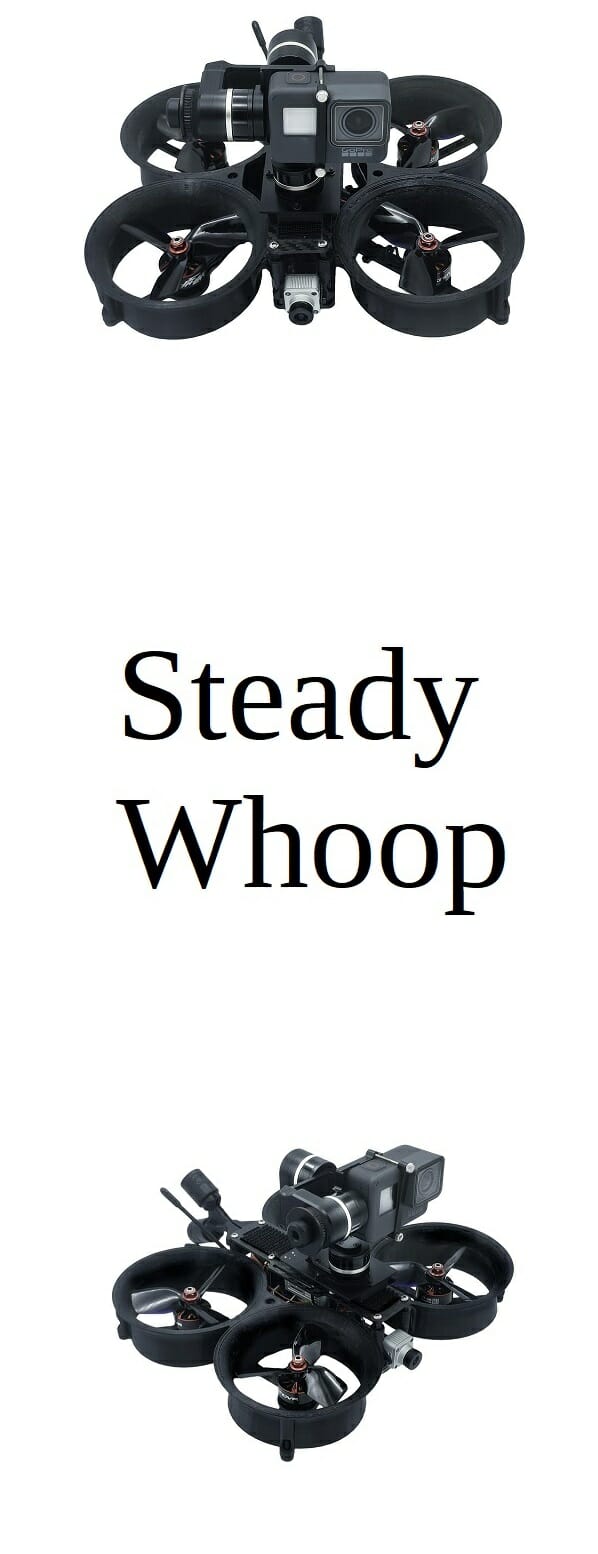
- 1 Introduction
- 2 Features
- 3 Package contents
- 4 About the developer and the process of revision
- 5 Why SteadyWhoop?
- 6 Demand
- 7 Aircraft weight and flight duration
- 8 Flight speed
- 9 DJI Digital FPV System
- 10 Do I need to activate GoPro Digital Stabilization? Or use a post production tool like ReelSteady?
- 11 Control
- 12 Gimbal control
- 13 Main purpose of SteadyWhoop
- 14 Is the drone suitable for a beginner?
- 15 Will the suspension withstand a collision or heavy impact from a crash?
- 16 Moisture protection
- 17 Custom assembly
- 18 What improvements can be expected for professional use in soon?
- 19 Availability and price
- 20 Videos
Introduction
We think many, if not seen, then heard about CineWhoop - compact drones built for high-quality aerial photography in almost any conditions, from the street to cramped rooms with people or expensive interior items. In other words, it allows you to get angles that cannot be achieved with a manual camera or a larger standard drone. The propulsion system of such copters is hidden behind a ring guard to avoid direct contact of the rapidly rotating propellers with property or people. SteadyWhoop builds on the same functionality, only now it includes a camera stabilizing motorized gimbal for imaging that professionals can now use.
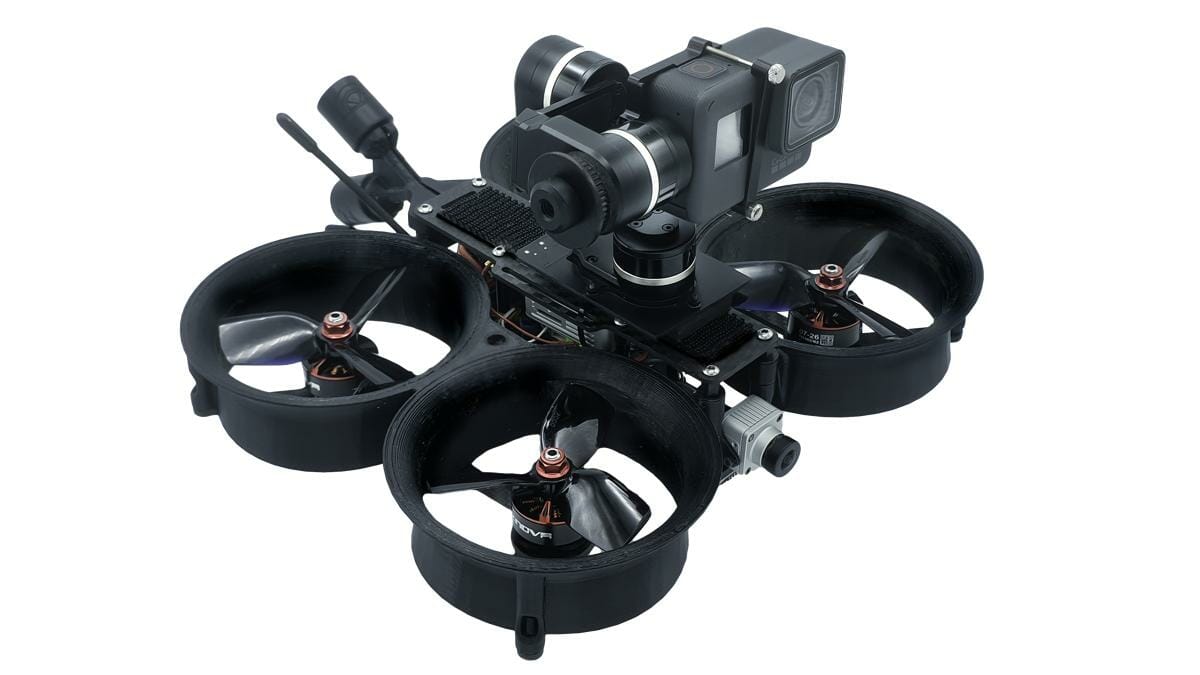
Features
- Flight weight 1050 g
- Frame size 280 mm
- Frame length 15 cm
- Protection ring size 80 mm
- The Geyser frame was specially designed to fit heavier payload
- All structural elements are made of flexible and durable material. (We have been working with a 3D printing specialist for 4 years)
- Hobbywing ESCAllows you to achieve real cinematic effects when switching
- Soft tilt angle changes that do not affect flight stability
- The gimbal can be set at 90 ° for performing panoramic POVs
- Digital FPV system from DJI Innovations
- 2 × Angel / Acro Flight Modes
- High Gain (2/5 dBi) Circular Polarized Omnidirectional Antennas
- TBS CROSSFIRE NANO RX
- The Crossfire antennas are positioned behind the drone in an L shape to optimize signal in all directions.
- FPV removal distance up to 3 km (even in difficult conditions)
- After many tests, the developer optimized: PID, filters and speed settings; Decreased engine temperature; Reduced vibration. Guaranteed smooth and reliable drone
- 2 × Tinyleds 4-6S located at the rear of the drone
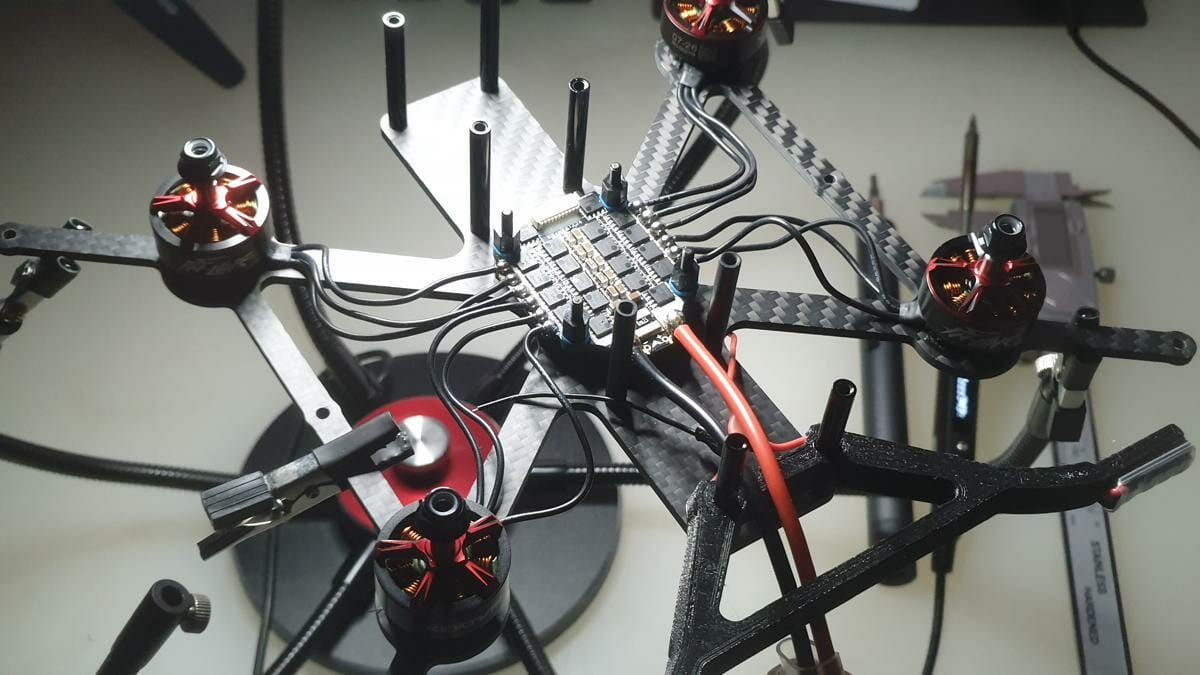
Package Contents
The developer offers the drone in eight configurations at once. But only six of them include a 3-axis mechanical gimbal. Also added is the Mini version of the drone, built on the classic Squirt type short frame. The rest are built on a reinforced, elongated "Steady the Geyser" frame, allowing for more payload:
- Cinewhoop Squirt V2
- Cinewhoop Geyser
- Mini SteadyWhoop
- Steadywhoop
- Mini Steadywhoop - Combo
- Steadywhoop - Combo
- Mini Steadywhoop - Full Combo
- Steadywhoop - Full Combo
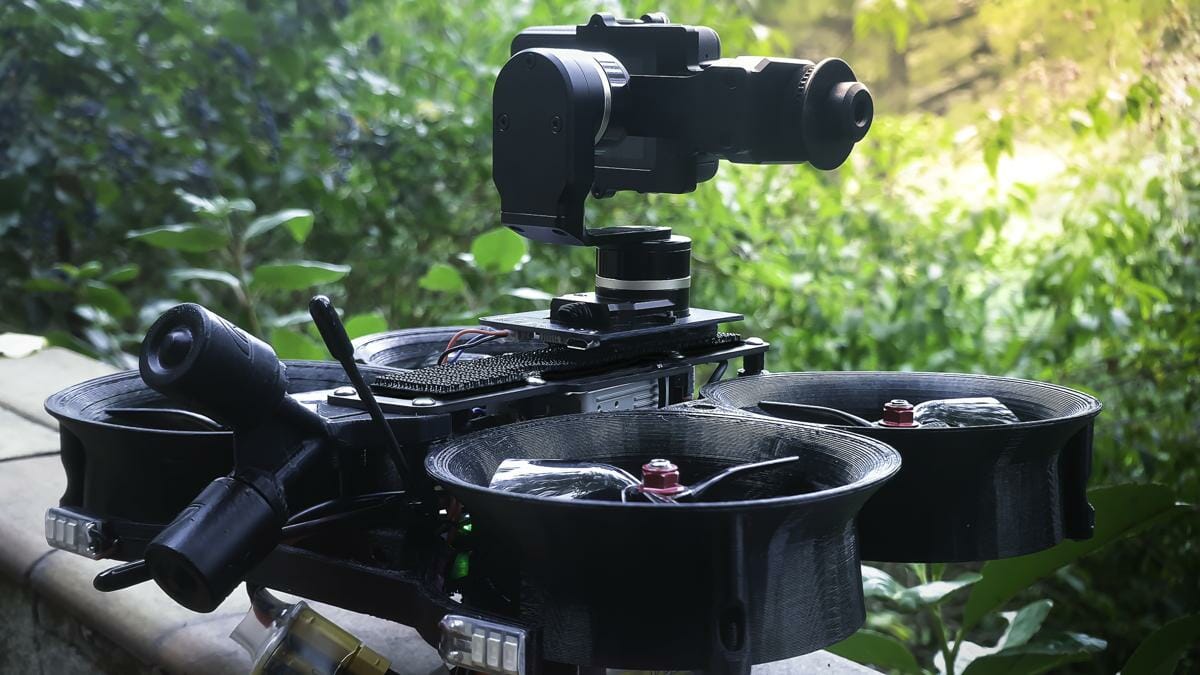
About the developer and refinement process
SteadyWhoop is designed and built by Eric Ziegel. Eric is a professional filmmaker who, among other things, is fond of developing specialized mechanisms for filming from non-standard angles. The development of such a drone was prompted by the lack of an effective and portable tool for obtaining stabilized and cinematic shots at medium altitudes, like a cinema crane, which in turn does not give complete freedom of action and is too bulky and expensive equipment. In February last year, inspired by the experience of the guys from Shendrones, I decided to retrofit their solution (Squirt drone) with a mechanical 3-axis stabilizer. The first tests almost immediately gave the desired result, after which Eric proceeded to the necessary revision and testing of the system, which took almost three months of daily work. Testing affected the selection of the desired power plant, PC adjustment and gimbal selection.
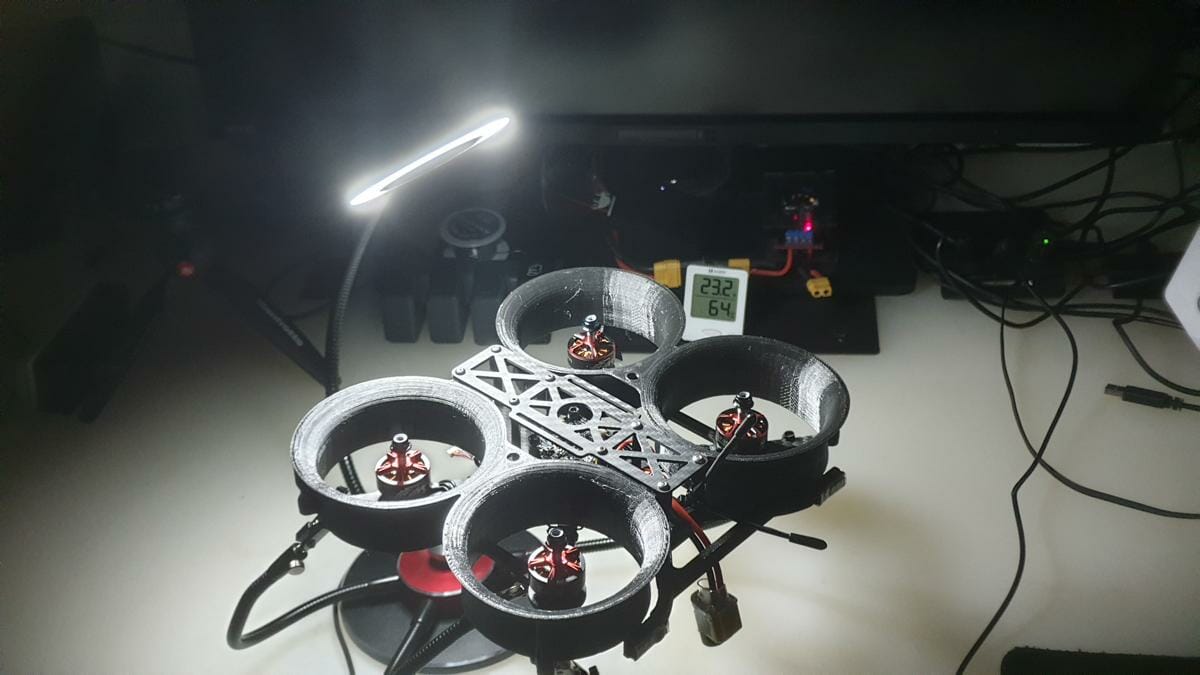
Why SteadyWhoop?
According to Eric, during the tests, he realized that the instrument he had implemented actually became a flying steadicam that could follow the actor, and also allowed free creative flights while simultaneously controlling the tilt of the gimbal from the control equipment, which fundamentally distinguished the model from the standard version of the drone. Then Benoit Fink (a renowned professional drone pilot) rightly pointed out that the resulting drone could no longer be called CineWhoop, and that they should come up with a new name for it. This is how the first SteadyWhoop was born.

Demand
The pros have realized the unprecedented potential of FPV shooting, and since the inception of CineWhoop, they have been looking for a simple, reliable, straight-line tool that does not require hours of training and drone tuning. As a result, this pushed him to offer a novelty to anyone who needs its capabilities.
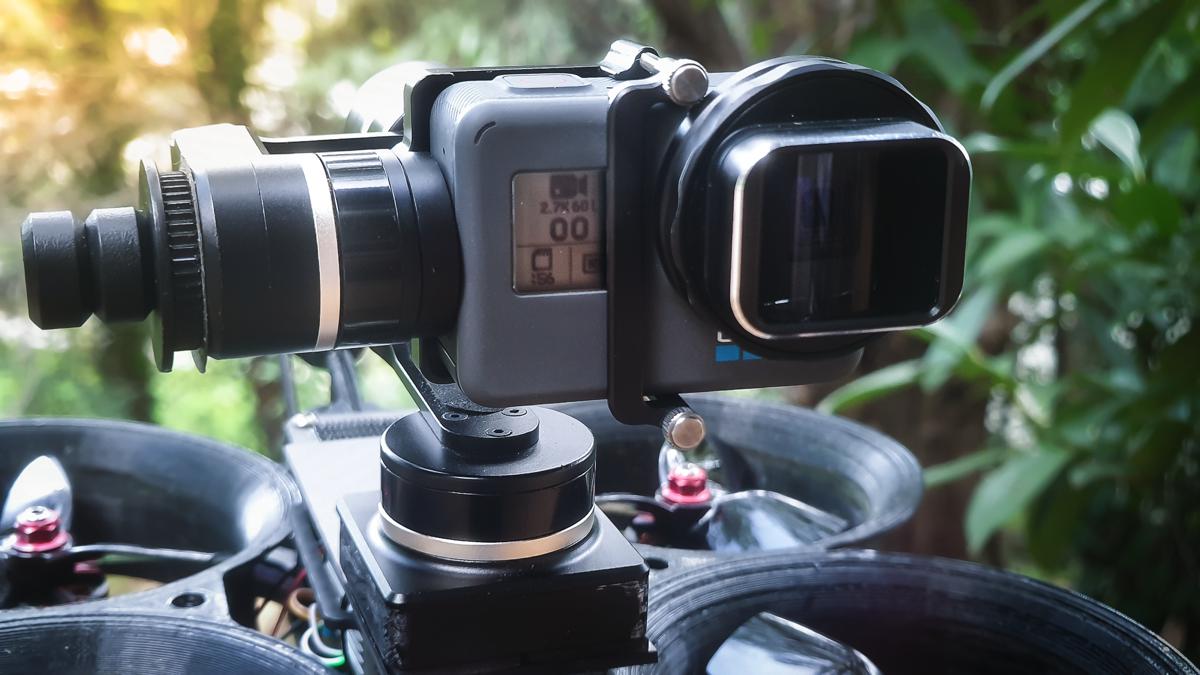
Flight weight of the drone and flight duration
The flight weight of the drone is 1100 grams. The model runs on 5S LiPo batteries with a capacity of 1800 mAh, which allows for a flight duration of about 3 minutes 30 seconds.
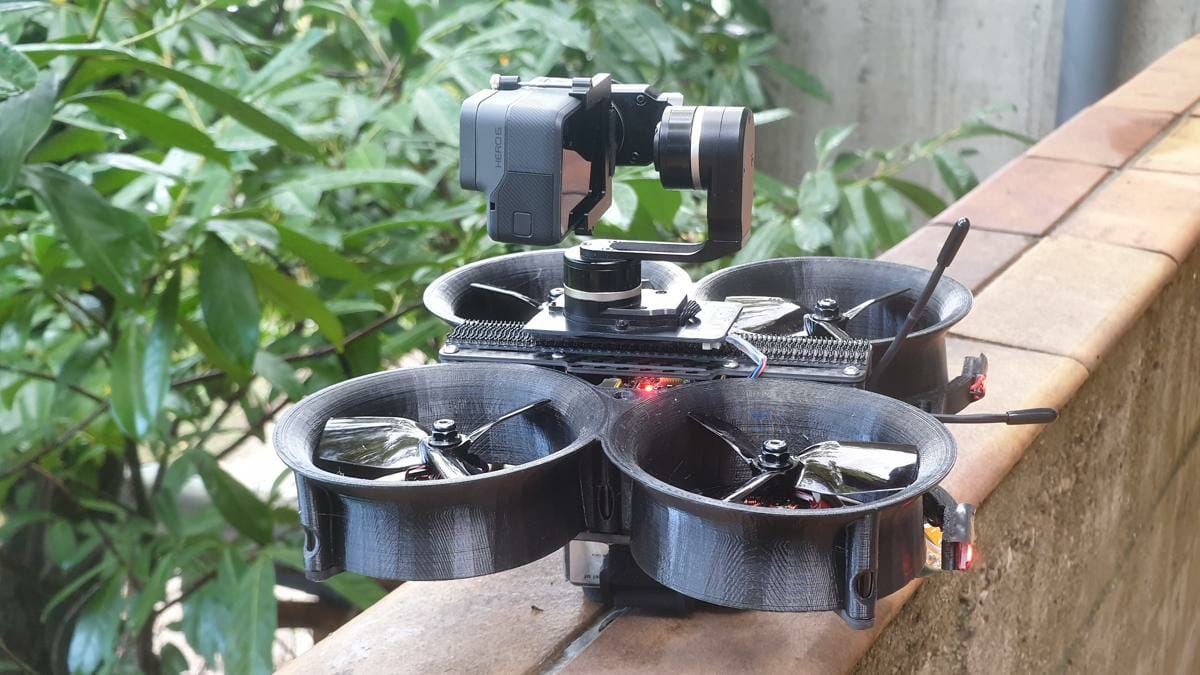
Airspeed
SteadyWhoop, as with the motion picture crane, is designed for slow motion and cinematic shooting. Given its weight and momentum, it can fly or hover at very low speeds, making it suitable for use as a steadicam. Max. level flight speed is about 50 km / h in Acro mode and 35 km / h in Angel mode.
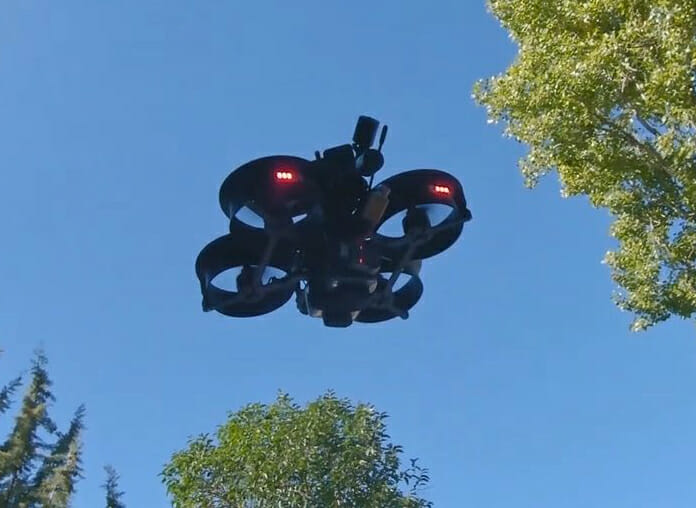
DJI Digital FPV System
By default, the drone uses DJI Digital FPV System, which allows Fly confidently, see all the details of the environment, and anticipate the best angles. According to Eric, the DJI system is especially suitable for beginners who are just getting started with first-person flight. But, he also noted that if the customer wishes, they can provide SteadyWhoop without a DJI FPV system.

Do I need to activate the digital stabilization of my GoPro? Or use a post production tool like ReelSteady?
The advantage of the on-board SteadyWhoop platform is precisely to get beautiful stabilized footage without additional processing. However, it is possible, but not at all necessary.
If necessary, the developer recommends using the Hypersmooth GoPro Hero 7 in real time, or as a last resort the ReelSteady Go software in conjunction with the Hero 6. This will allow you to make even more sophisticated and professional stabilization correction...
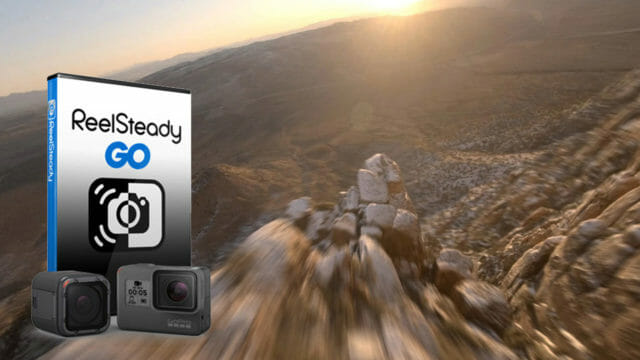
Control
As with the FPV system, two options are available Controls to choose from: with a standard remote ( eg Taranis X7 ), which usually every advanced hobbyist has, and with the DJI remote control, which comes with a digital FPV system from DJI. It is enough to clarify this when ordering a drone.
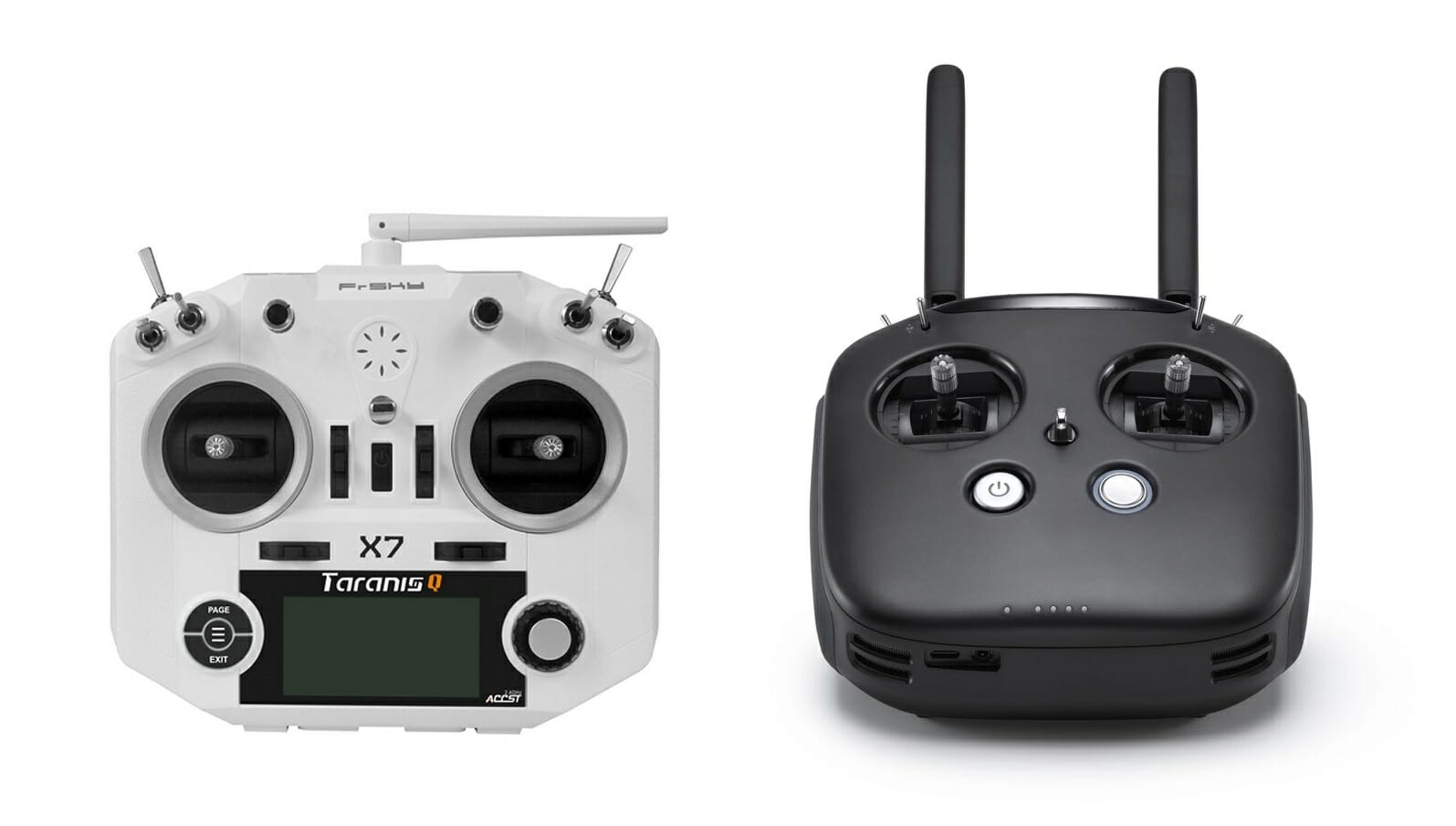
Gimbal Control
The platform allows the camera to tilt up and down without the need for a second operator. The gimbal is controlled by a 3-position switch on the control equipment. For example, before passing under the subject for shooting, you can move the camera up by moving the switch up. And after passing, return it to a horizontal position and then move it down to simulate a dive. As a result, this effect is very interesting and exciting! A damping pad was also added to the gimbal design to avoid jerking during flight.

The main purpose of SteadyWhoop
It is primarily intended for professional and semi-professional directors, as well as for all those who are in finding an effective and operational solution for shooting FPV drone, which does not require additional time for training, testing, tuning and repair.
Is the drone suitable for beginners?
Due to its stability, drone piloting can be easily mastered by beginners. Its speed, height, are limited, as the weight / power ratio is an important factor. And thanks to the DJI FPV system, the pilot will see a realistic and high-quality image in the glasses, which will allow him to identify obstacles in advance.
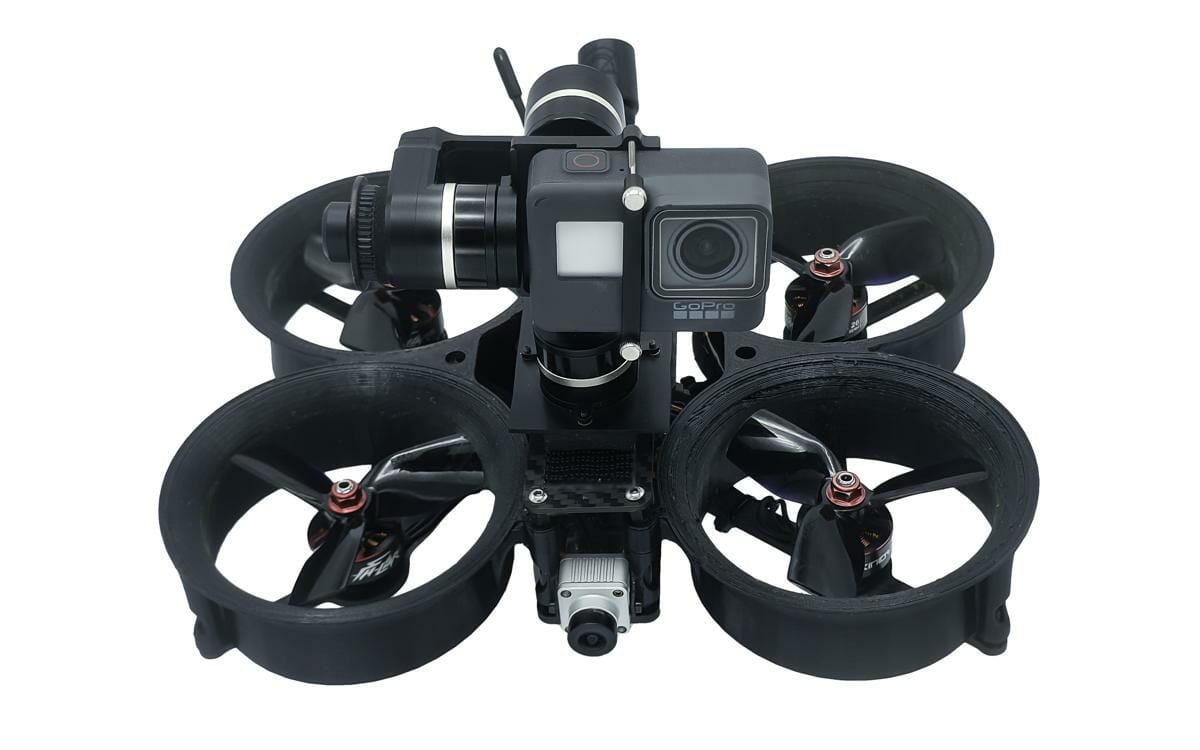
Will the gimbal withstand a collision or heavy impact from a crash?
As the developer himself explains, it all depends on speed. In the event of an accident at low speed or in Angel mode, the air ducts and propellers will be the first to suffer. He also noted that for three months of operation he had three crashes, as a result of which the suspension never suffered.
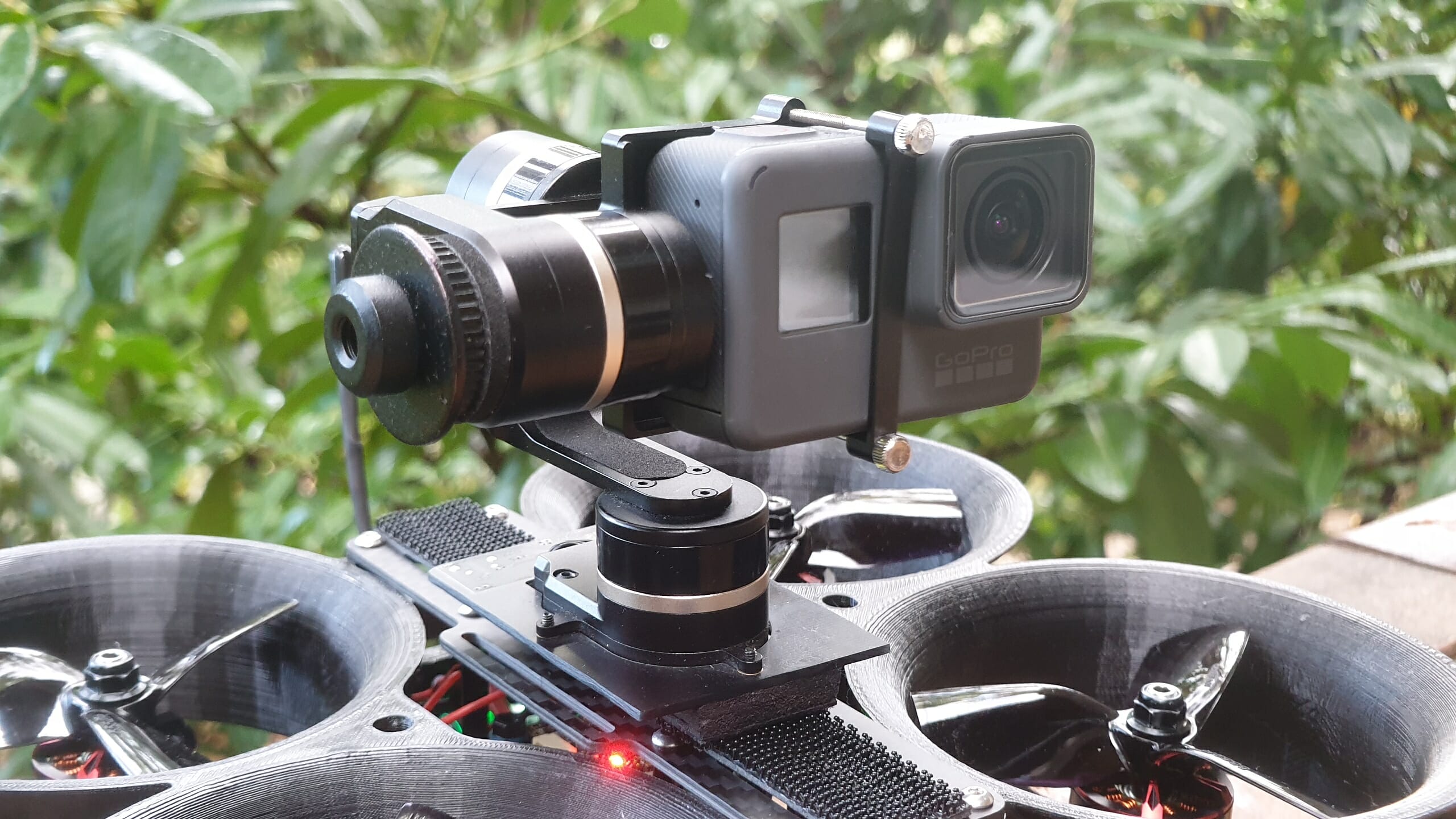
Moisture protection
You can fly in the rain. For this, modified silicone is used so that the device does not suffer in high humidity conditions.
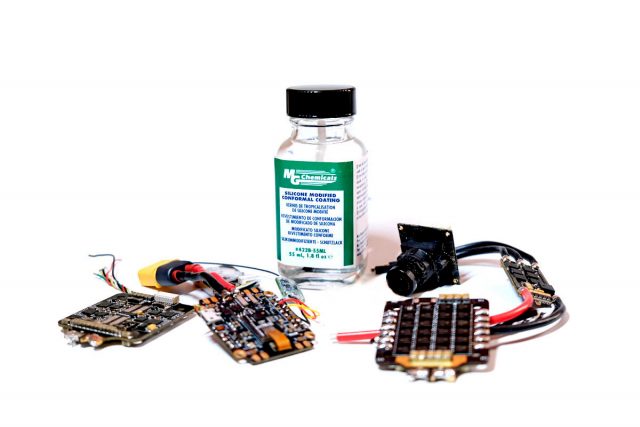
Custom build
The developer specifies that each SteadyWhoop is built individually. Assembly times are on average 2 weeks. Special attention is paid to every element of the drone to ensure maximum quality. Then, before shipping, it is checked that it is working properly. Currently, the main clients are in the USA and Germany.
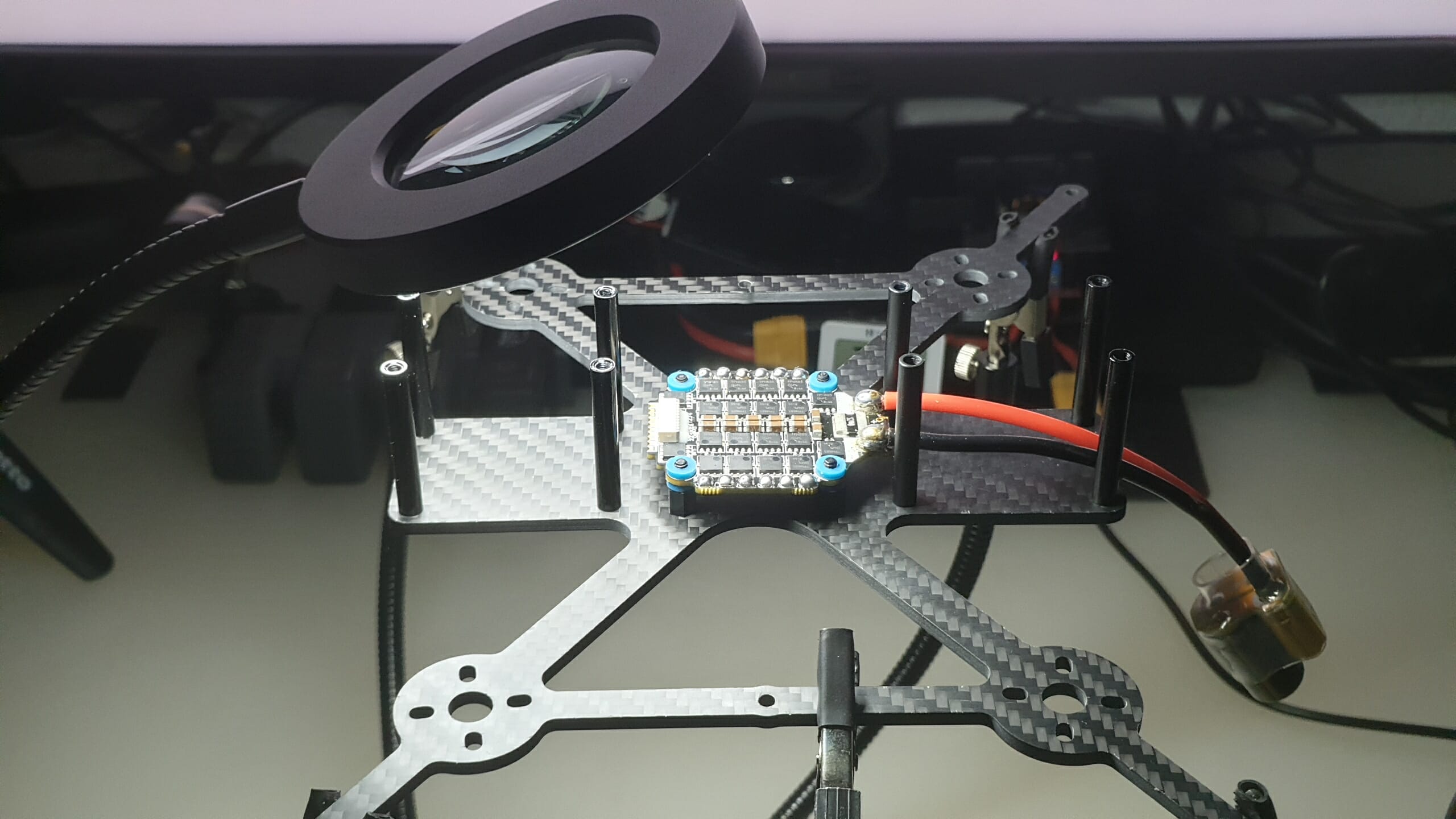
What improvements can be expected for professional use in the near future?
The developer is working towards improving the capabilities of cinematic shooting. Currently, some promising tests have already been completed with an anamorphic cinema lens installed for GoPro. Other tests with a 3.4mm lens showed good results in wide-angle 4K shooting without the fisheye effect. The idea is to match the lens to the desired shots, just like for a DSLR. We are also working on the possibilities of using other gimbals, including gimbals available on the market. It is also exploring the possibility of supporting new cameras in addition to GoPro, such as the Sony RX0 II.
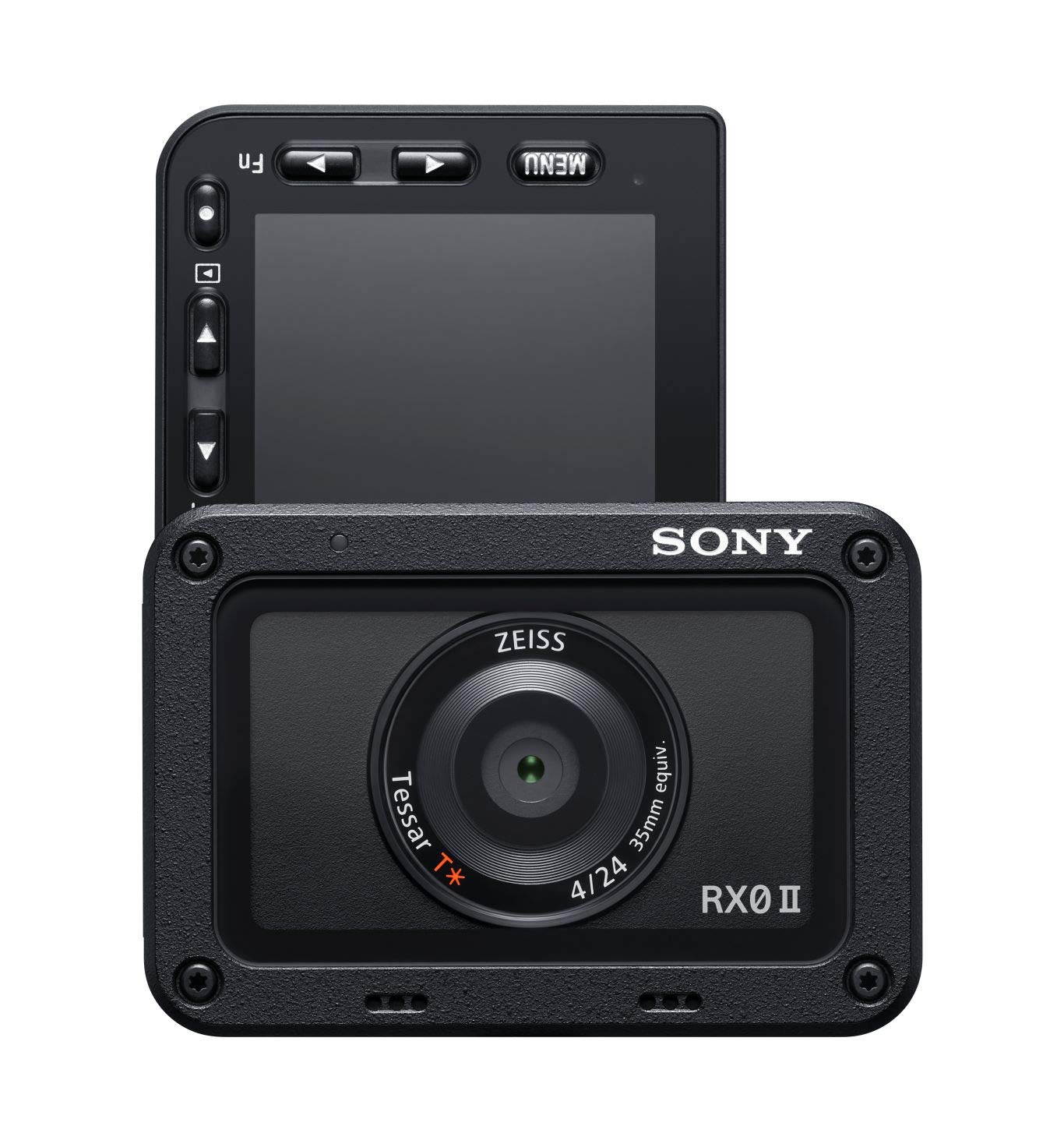
Availability and Pricing
SteadyWhoop is offered in the developer's store, configured and ready to use. Thus, it allows both the novice and the director to get a fully functional filming tool right out of the box. The developer uses settings and equipment that have proven themselves positively during several months of testing, so that each client has a reliable and high-quality quad. Continuous customer support is provided and a 10-minute video is provided showing a step-by-step process of launching the drone after unpacking. Depending on the configuration, the price starts from 560 €:
- Cinewhoop Squirt V2 - 560 €
- Cinewhoop Geyser - 620 €
- Mini SteadyWhoop - 900 €
- Steadywhoop - 1000 €
- Mini Steadywhoop - Combo - 1201 €
- Steadywhoop - Combo - 1300 €
- Mini Steadywhoop - Full Combo - 1664 €
- Steadywhoop - Full Combo - 1764 €
Video
Video from the developer with the SteadyWhoop drone.
.






